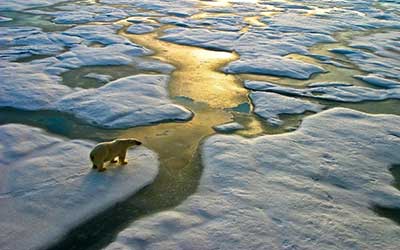Date: 24/5/2023
Relevance: GS-3: Conservation, Environmental Pollution, and Degradation, Environmental Impact Assessment.
Key Phrases: Nature Ecology & Evolution, Climate change, Impact of 1.5 Degrees Celsius Warming, Escalating Risk at 2.5 Degrees Celsius Warming, Habitat Loss, geographic range.
Why in news?
- A recent study published in the journal Nature Ecology & Evolution highlights the alarming impact of climate change on global biodiversity.
- The research suggests that rising temperatures could push up to 30 percent of species over tipping points, leading to significant disruptions in their geographic ranges.
- With the goal of raising awareness about the urgency of addressing climate change, the study presents a comprehensive analysis of over 35,000 animal species, seagrasses, and climate projections up to the year 2100.
Rising Temperatures Push Species Beyond Tipping Points:
- The Impact of 1.5 Degrees Celsius Warming:
- According to the study, if global temperatures increase by 1.5 degrees Celsius, approximately 15 percent of the studied species will face unfamiliarly hot temperatures across at least 30 percent of their existing geographic range within a single decade. This represents a significant risk to the survival of these species.
- Escalating Risk at 2.5 Degrees Celsius Warming:
- The study reveals that the proportion of species at risk doubles when the warming reaches 2.5 degrees Celsius.
- In this scenario, approximately 30 percent of the studied species are projected to experience significant thermal exposure, endangering their ability to survive and adapt to the changing climate.
The Thermal Exposure Threshold and Implications:
- Defining the Thermal Exposure Threshold:
- The research defines the thermal exposure threshold as the point at which temperatures consistently exceed the most extreme monthly temperature historically experienced by a species across its geographic range from 1850 to 2014.
- Crossing this threshold signifies that the species will encounter conditions they are unlikely to survive without adaptation.
- Habitat Loss and Geographic Range:
- As the thermal exposure threshold is surpassed, species are likely to face abrupt habitat loss due to the changing climate.
- Although they may not immediately go extinct, there is no evidence to suggest their survival under the higher temperatures they encounter.
Urgent Need for Conservation Efforts:
- Limited Adaptation Timeframes:
- The study highlights the lack of adequate time for species to migrate to cooler regions or evolve to adapt to the rapidly changing climate.
- This limitation increases the risk of mass extinction events, underscoring the urgency of implementing effective conservation strategies.
- Directing Conservation Efforts:
- The researchers believe their findings can guide conservation efforts by providing an early warning system that identifies species at risk.
- This information can aid in prioritizing conservation measures and allocating resources to areas and species that require immediate attention.
Raising Awareness through Animated Data:
- Unfolding Changes Over Time:
- In contrast to previous static snapshots, the study presents its data as a dynamic film, enabling viewers to witness the progressive impacts of climate change on species over time.
- This approach serves to emphasize the widespread and simultaneous risks faced by numerous species across the globe.
- Catalysing Action:
- By animating the process and demonstrating the potentially catastrophic consequences of unchecked climate change, the researchers aim to encourage proactive measures to mitigate the harmful effects on animals and plants.
- The study acts as a call to reduce carbon emissions urgently and prevent a devastating extinction crisis.
Conclusion:
- The study highlights the severe repercussions of climate change on global biodiversity. It warns that up to 30 percent of species may be pushed beyond tipping points due to rising temperatures, leading to the potential loss of habitat and increased risk of extinction.
- Urgent measures to reduce carbon emissions are crucial in mitigating these harmful effects and safeguarding the delicate balance of ecosystems worldwide.
- The study's findings serve as a call to action, urging policymakers, organizations, and individuals to prioritize climate change mitigation and conservation efforts to preserve the world's rich biodiversity for future generations.
Source: The Hindu
Mains Question:
Q. “Climate change is likely to push up to 30 percent of species over tipping points, according to a recent study.” Analyse the potential consequences of this phenomenon on global biodiversity and suggest measures that can be taken to mitigate the risks posed by climate change to species survival.







